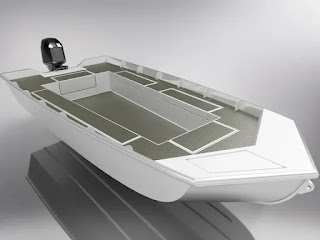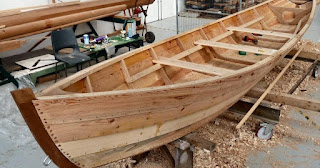Best Power Boat Plans for DIY Builders: A Deep Dive into Design and Construction
Building your own powerboat is a challenging but incredibly rewarding project. It demands meticulous planning, precise execution, and a healthy dose of patience. However, the satisfaction of slipping your self-built vessel into the water is unparalleled. This article dives into selecting the best powerboat plans for DIY builders, guiding you through critical considerations to ensure a successful build.
Choosing the Right Powerboat Plan: Factors to Consider
Before diving into the vast world of powerboat plans, carefully assess your skills, resources, and desired outcome. Don't let ambitious designs overwhelm your capabilities. Begin by honestly evaluating your woodworking experience. Are you comfortable with complex joinery techniques? Do you possess the necessary tools and workshop space? Consider these crucial factors:
Skill Level Assessment
Powerboat plans range from simple designs ideal for beginners to intricate projects demanding advanced skills. Beginners should opt for simpler designs with straightforward construction techniques, such as plywood or fiberglass-reinforced hulls. Intermediate builders can tackle more complex designs involving multiple parts and custom features. Advanced builders can confidently tackle sophisticated designs, perhaps even incorporating custom engine installations or unique hull shapes.
Boat Size and Type
The size and type of boat directly impact the complexity of the build. A small, simple runabout requires significantly less time and resources than a large, complex cabin cruiser. Consider your intended use. Do you need a fishing boat? A family runabout? A speedboat? Each type necessitates a different hull design and construction approach. Research different designs, considering their suitability to your needs and skill level.
Available Resources and Budget
Building a boat is an investment that extends beyond the initial cost of plans. You need to factor in the cost of materials, tools, and any necessary specialized equipment. Consider whether you have access to a suitable workspace with enough room to build and maneuver the boat. Don't underestimate the cost of unexpected issues – always factor in a buffer for unforeseen expenses.
Where to Find Reliable Powerboat Plans
Finding reputable powerboat plans is crucial for a successful build. Avoid unreliable sources that offer poorly-designed or incomplete plans. Reputable sources offer detailed instructions, accurate measurements, and often include material lists and construction tips. Look for these sources:
Reputable Online Retailers and Publishers
Numerous online retailers specialize in providing high-quality boat plans. These sites often include customer reviews and ratings, offering valuable insights into the quality and complexity of specific plans. Read these carefully before making a purchase. Look for detailed descriptions including specifications, diagrams, and builder testimonials.
Boat Design Software and Professionals
For advanced builders, investing in boat design software allows for creating custom designs. While expensive, this provides unparalleled control and customization. Alternatively, collaborating with a professional naval architect offers invaluable expertise, ensuring the boat's stability, performance, and seaworthiness. This option, however, significantly increases the project's cost.
Classic Boat Plans and Books
Classic boat plans often provide time-tested designs that are reliable and well-documented. These plans, found in specialized books or online archives, can provide a satisfying build, particularly for those who value proven designs and traditional techniques. However, accessing and interpreting these plans can require more advanced skills.
Popular Powerboat Plans for DIY Builders
Several popular designs cater to various skill levels and preferences. Remember, "best" depends heavily on your skills and ambitions.
Plywood Designs: Simple and Affordable
Plywood offers a relatively easy-to-work-with material for beginners. Many plans utilize plywood construction, offering durable and affordable hulls. These designs often prioritize simplicity and ease of construction, making them ideal for first-time builders. Expect straightforward joinery techniques and readily available materials.
Fiberglass Designs: Durable and Sleek
Fiberglass offers superior strength and durability. Fiberglass designs, however, require more specialized skills and equipment. Working with resins and fiberglass cloth needs careful preparation and protective gear. These designs offer a sleek finish and a highly durable hull, but demand a greater investment in time, materials, and specialized tools.
Aluminum Designs: Lightweight and Robust
Aluminum offers a lightweight yet robust alternative. While aluminum construction requires welding skills, it offers excellent strength-to-weight ratios. These designs are popular for smaller, high-speed boats, but require specialized tools and a higher level of metalworking expertise.
Building your own powerboat is a significant undertaking. Careful planning, selecting the right plans, and honest self-assessment are crucial. Enjoy the journey, and remember to prioritize safety throughout the entire process!















